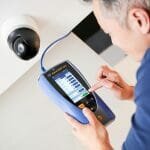~ How can Industrial Internet of Things (IIoT) edge analytics improve manufacturing efficiency? ~
Research from market insight provider IoT Analytics has revealed that making edge computing systems ‘smart’ by integrating intelligent tools is a key driver of the technology’s continued growth. Edge analytics is a major enabler of an intelligent edge solution, broadening the scope of its use cases by enabling low latency, high-volume data actions. Here, Johan Jonzon, Co-Founder and CMO of low-code streaming analytics platform Crosser, explains the important role of edge analytics in Industry 4.0.
A 2020 survey conducted by industrial automation provider Yokogawa revealed that 48 per cent of respondents valued productivity as a key focus in their digitalization strategies, while 40 per cent regarded operational efficiency as their main objective.
Edge computing plays a key role in facilitating this acceleration, but making the edge intelligent is essential to maintaining its value. Edge analytics is the process of collecting, analysing and acting on data gathered from IIoT devices directly from the edge, enabling manufacturers to improve their efficiency and make innovation happen faster. But how?
Accessing machine data
Big data laid the foundations of Industry 4.0, yet accessing it in the right way continues to challenge manufacturers. Factory floors have so many different machines, which all collect data with the potential to provide valuable insight. Retrieving relevant data in the correct format is the first hurdle for manufacturers looking to make the most of their edge capabilities.
However, it isn’t just the quantity of data that edge analytics controls. It is also used to harmonise data by converting different datasets into a common format for machine compatibility and comparison. Factory floors hold equipment from multiple generations, which all collect data in different ways.
Processing this vast amount of data at the edge prevents overwhelming the cloud system, and also significantly reduces associated costs. By avoiding expensive cloud entry services, only processing and storing relevant data on the cloud can reduce costs by up to 99 per cent.
Streamlining industrial processes
Overcoming data access issues is the first benefit of edge analytics for manufacturers, but establishing how to make the most of the data collected is the next piece of the puzzle. Research conducted by Forrester estimated that between 60 and 73 per cent of all data collected is not used for analytics. However, tapping into data in real time can enhance machine performance and streamline operational efficiency.
Analysing data at the edge equips manufacturers with the opportunity to evaluate it as data is being produced and respond to machines to enhance their performance. For example, the speed at which a machine is running could be modified immediately in response to the data collected from the next machine on the factory floor.
Choosing to do this at the edge rather than the cloud makes this application possible. Keeping the data local facilitates valuable machine to machine (M2M) communication across equipment from different generations running on different protocols using data from different sources, streamlining manufacturing processes.
Improving business management
The efficiency of the factory floor affects every business operation — if production slows or equipment fails there could be major disruption to the entire supply chain. Just as edge analytics can connect machines and processes without sending data to the cloud, it can also integrate data into the enterprise resource planning (ERP) system. An ERP system is a business process management software that manages a company’s finances, supply chain, operations, manufacturing and human resources activities all in one place.
ERP systems are increasingly moving towards an event-driven architecture (EDA), which uses information to connect business functions in real-time by responding to ‘events’. Modern event-driven edge analytics software can be used as the connecting layer between the factory floor and the ERP system, which can be used to send relevant data in real time to other business functions. In this way, data collected directly from the factory floor can be used across multiple business areas, to improve quality control, meet increases in product demand, and avoid disruption due to unexpected equipment downtime.
Edge analytics is a key technology for making the most of a smart edge infrastructure. By facilitating real-time communication between machines, processes and other business areas for more efficient production output, edge analytics allow manufacturers to maximise machine data’s potential for increased efficiency not only on the factory floor, but across the entire company’s operations.








